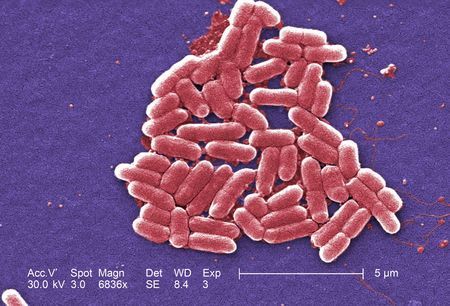Page 10911
May 28, 2016
Thailand Creating Forests
Posted by Bryan Gatton in categories: climatology, drones, food, sustainability
As a result of deforestation, only 6.2 million square kilometers remain of the original 16 million square kilometers of forest that formerly covered Earth. Apart from adveserly impacting people’s livelihoods, rampant deforestation around the world is threatening a wide range of tree species, including the Brazil nut and the plants that produce cacao and açaí palm; animal species, including critically-endangered monkeys in the remote forests of Vietnam’s Central Highlands, and contributing to climate change instead of mitigating it (15% of all greenhouse gas emissions are the result of deforestation).
While the world’s forest cover is being unabashedly destroyed by industrial agriculture, cattle ranching, illegal logging and infrastructure projects, Thailand has found a unique way to repair its deforested land: by using a farming technique called seed bombing or aerial reforestation, where trees and other crops are planted by being thrown or dropped from an airplane or flying drone.
The tree seed bombing in Thailand is one of the greatest examples of ‘Conscious Entrepreneurs’ or ‘Spiritual Entrepreneurs’ out there right.
May 27, 2016
Dark Matter + Black Hole = Wormhole?
Posted by Andreas Matt in categories: cosmology, particle physics
According to a paper posted to the arXiv pre-print server last week, the difference between an everyday supermassive black hole and a space-time tunneling wormhole may be a lacing of dark matter. While it sounds like crank fodder of the sort that not infrequently winds up on arXiv, the idea may hold actual water.
The theory pertains to one particular proposed form of dark matter known as axionic dark matter. Axions, a hypothesized fundamental particle of matter relating to the strong nuclear force, aren’t the only proposed candidate for dark matter, but as searches for WIMPs (weakly-interacting massive particles)—far and away the favored proposed particle comprising dark matter—come up empty, axionic dark matter has become a more and more plausible scenario. As theorized, dark matter axions would permeate the universe as an energetic condensate, interacting only very weakly via the electromagnetic force and existing as a kind of ghostly cosmic foam.
Crucially, while individual axions would be very light, they would together make up enough mass to account for the dark matter halos that form the gravitational scaffolding of galaxies. Axions are currently being hunted for via experiments involving giant Earth-based mirrors.
May 27, 2016
High-Tech Railgun Promises New Military Advantage
Posted by Sean Brazell in category: military
A powerful new Naval railgun can fire a round that could travel from Washington, DC to Philadelphia in under two minutes. Pentagon officials believe the high-tech cannon could pave the way for a military advantage defending assets on sea and on land. Photo: U.S. Department of Defense.
May 27, 2016
Is a Blockchain a Blockchain if it Isn’t?
Posted by Philip Raymond in categories: bitcoin, business, cryptocurrencies, finance, innovation, internet, open source, software, transparency
Anyone who has heard of Bitcoin knows that it is built on a mechanism called The Blockchain. Most of us who follow the topic are also aware that Bitcoin and the blockchain were unveiled—together—in a whitepaper by a mysterious developer, under the pseudonym Satoshi Nakamoto.
That was eight years ago. Bitcoin is still the granddaddy of all blockchain-based networks, and most of the others deal with alternate payment coins of one type or another. Since Bitcoin is king, the others are collectively referred to as ‘Altcoins’.
But the blockchain can power so much more than coins and payments. And so—as you might expect—investors are paying lots of attention to blockchain startups or blockchain integration into existing services. Not just for payments, but for everything under the sun.
Think of Bitcoin as a product and the blockchain as a clever network architecture that enables Bitcoin and a great many future products and institutions to do more things—or to do these things better, cheaper, more robust and more  secure than products and institutions built upon legacy architectures.
secure than products and institutions built upon legacy architectures.
Continue reading “Is a Blockchain a Blockchain if it Isn’t?” »
Tags: bitcoin, block chain, blockchain, distributed, p2p, peer-to-peer, permissionless, trust, trustless
May 27, 2016
Schrödinger’s cat just got even weirder (and even more confusing)
Posted by Sean Brazell in categories: computing, quantum physics
May 27, 2016
Light Can ‘heal’ Defects in New Solar Cell Materials
Posted by Karen Hurst in categories: electronics, nanotechnology, particle physics, solar power, sustainability
A family of compounds known as perovskites, which can be made into thin films with many promising electronic and optical properties, has been a hot research topic in recent years. But although these materials could potentially be highly useful in applications such as solar cells, some limitations still hamper their efficiency and consistency.
Now, a team of researchers at MIT and elsewhere say they have made significant inroads toward understanding a process for improving perovskites’ performance, by modifying the material using intense light. The new findings are being reported in the journal Nature Communications, in a paper by Samuel Stranks, a researcher at MIT; Vladimir Bulovic, the Fariborz Maseeh (1990) Professor of Emerging Technology and associate dean for innovation; and eight colleagues at other institutions in the U.S. and the U.K. The work is part of a major research effort on perovskite materials being led by Stranks, within MIT’s Organic and Nanostructured Electronics Laboratory.
Tiny defects in perovskite’s crystalline structure can hamper the conversion of light into electricity in a solar cell, but “what we’re finding is that there are some defects that can be healed under light,” says Stranks, who is a Marie Curie Fellow jointly at MIT and Cambridge University in the U.K. The tiny defects, called traps, can cause electrons to recombine with atoms before the electrons can reach a place in the crystal where their motion can be harnessed.
May 27, 2016
London black cabs are becoming London green cabs
Posted by Shailesh Prasad in category: futurism

London black cabs are going to go electric. https://www.facebook.com/HuffPostUKTech/videos/1230444406965677/
London black cabs are becoming London green cabs and going ele…
More Videos by HuffPost UK Tech.
May 27, 2016
31 responses to “Neverending Sex”
Posted by Maria Konovalenko in categories: biotech/medical, life extension, sex
Let’s formulate the task of life extension slightly differently. Something like this…How can we extend sex appeal?
Gyms and beauty salons are in charge of this question now. There is some success, but it’s mostly superficial. Plastic surgery only masks, but doesn’t delay the processes of aging.
Expanding sex appeal is a complex task. Its aspects include both beauty and the activity of the brain. To be sexually attractive we have to be smart and fun. One cannot solve the problem of dementia with makeup.
May 27, 2016
Corrected: U.S. sees first case of bacteria resistant to last-resort antibiotic
Posted by Sean Brazell in categories: biotech/medical, health
By ransdell pierson and bill berkrot.
(Reuters) — U.S. health officials on Thursday reported the first case in the country of a patient with an infection resistant to a last-resort antibiotic, and expressed grave concern that the superbug could pose serious danger for routine infections if it spreads.
“We risk being in a post-antibiotic world,” said Thomas Frieden, director of the U.S. Centers for Disease Control and Prevention, referring to the urinary tract infection of a 49-year-old Pennsylvania woman who had not traveled within the prior five months.
Continue reading “Corrected: U.S. sees first case of bacteria resistant to last-resort antibiotic” »















